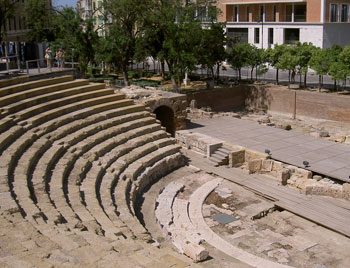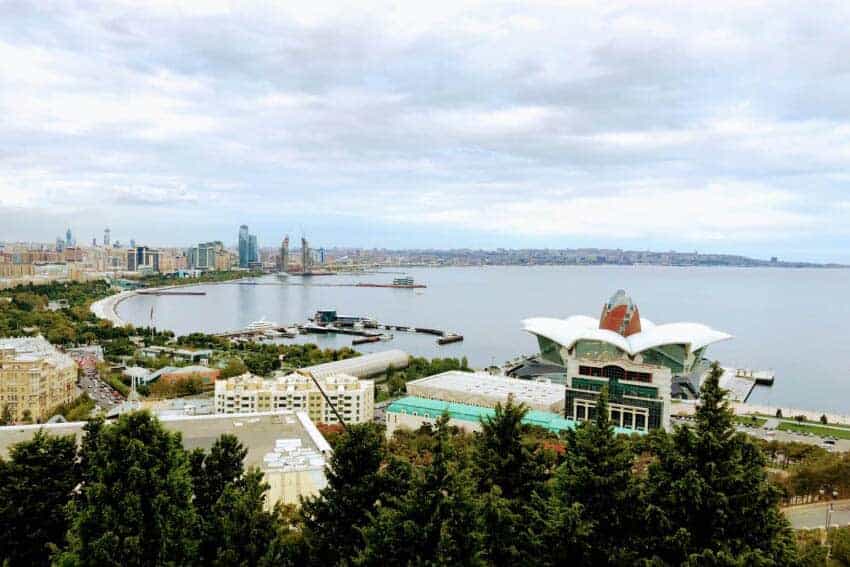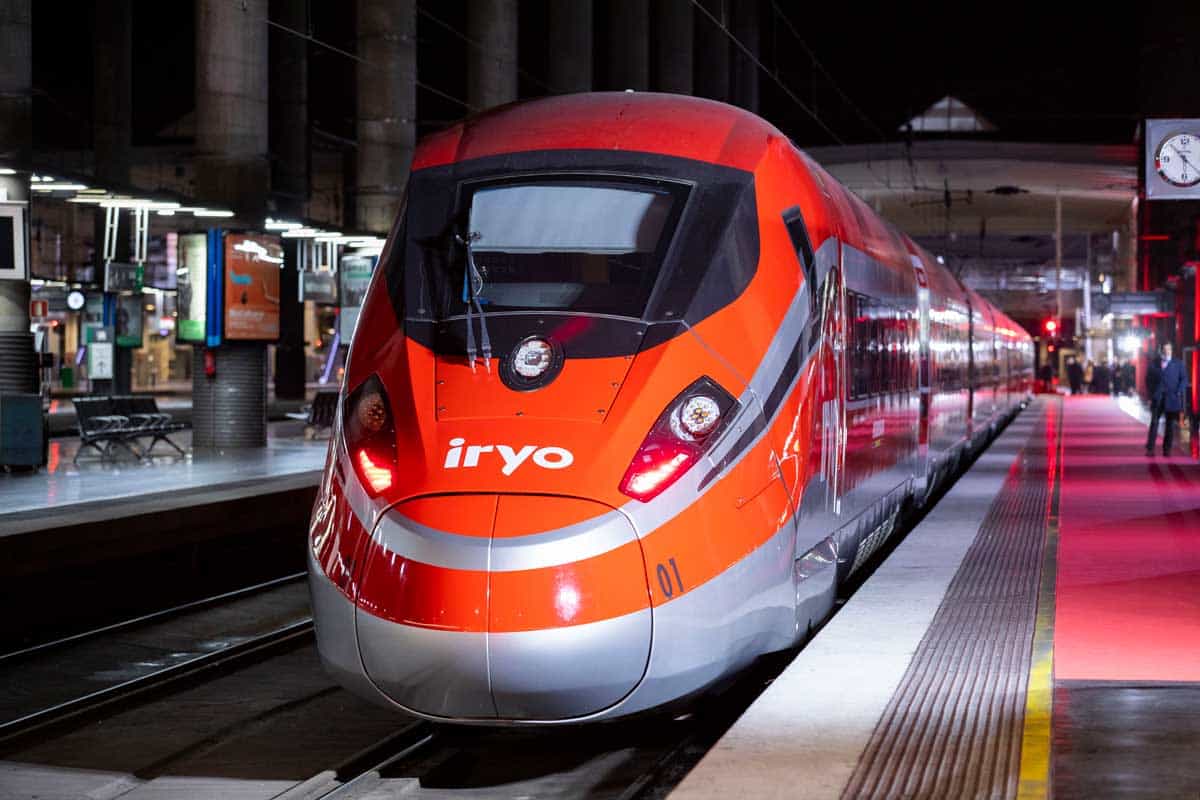Roman Ruins, Moorish Castles, and Tapas Bars
By Tristan Cano

Built on the site of a former Moorish stronghold, with a Cathedral (formerly the city’s main Mosque) at its heart, Malaga has all the hallmarks of a classical Andalucian city.
Its city center has long outgrown the lines of the old Moorish city, though its walls remain largely in place and stretch down towards Malaga’s impressive coastline.
The narrow passages of its old town are surrounded by a series of lively pedestrianized boulevards and shopping precincts.
These paved walkways are lined with row upon row of restaurants and tapas bars which explode into a hive of evening activity when the sun finally sets over Andalucía’s second largest city.
How to get there
Malaga Airport is Andalucía’s main connecting hub and a useful gateway for visiting the region. The No.19 bus will take you from the airport to Malaga City Center; the bus stop is located just outside the main arrivals hall and departs every half hour from 07:00 to midnight costing about €1.00.
Renting a car in Malaga makes it all much easier and you can see so many other great parts of Spain, too. There are so many interesting cities within a half day’s drive, places that would be harder to get to using public transport. Extremadura, for example, is a place that’s not well-traveled for definitely worth a detour.
A few tips on driving in Spain: When driving on a motorway (Autopista), don’t react angrily to cars flashing their headlights before overtaking you…. It’s the law! They are warning you that they are about to pass. The following items must be carried when driving in Spain, and it is an offense not to!
- Glasses; wearers must carry a spare pair in the car at all times.
- Light bulbs; a replacement set (usually present in hire cars).
- Documentation; driving license; (vehicle registration (V5) and certificate of motor insurance, if driving your own car).
- Warning triangle; One for non-registered vehicles, two for Spanish vehicles.
- Visibility vest; Now compulsory in Spain.
- First aid kit; Not compulsory, but recommended.
Seeing the sights

There can be no better place to begin your discovery of Malaga than at the cathedral itself.
Re-built between 1528 and 1782, while the cathedral’s façade is constructed in a baroque style, the interior bears more similarity to the Renaissance cathedrals of Cadiz and the Giralda in Seville.
In fact, other than the Giralda, the tower at Malaga Cathedral is the tallest in Andalucía.
The story goes that the cathedral was originally intended to have two similar towers but when the city ran out of money, the southern tower remained unfinished. The cathedral is still endearingly known as ‘la manquita’ or ‘the one-armed lady.’
There are many other beautiful churches in the city center which incorporate elements from both Christian and Islamic architectural traditions.
These include the charming Iglesia de Los Martires and the Iglesia de Santiago which was built in the Mudéjar style shortly after the Reconquista.
Malaga’s Roman Amphitheater
Just a short walk from the cathedral is the Roman amphitheater, which dates back to the reign of Emperor Augustus and is one of the oldest Roman theaters on the Iberian Peninsula.
It covers a large area, roughly the size of a football field, so it is surprising to think that it had remained buried under the ground for centuries, having only been rediscovered in 1951.
Located on a hill overlooking the amphitheater is the Alcazaba, an 11th Century Moorish fortification which was mainly built during the reign of King Badis, the Zirid ruler of Granada. It served as a palace for the Zirid governors of the city and was built using Roman remains, with Tuscan arches and columns strewn around the site.
Its design was actually based on that of the Alhambra in Granada, a fact which becomes all too apparent if you take a stroll through its beautifully landscaped gardens with its many ponds and fountains.
The site is closed on Mondays, but you can save yourself the normal €3.45 entrance fee by visiting on a Sunday after 14:00 when entry is free.
While not as ornate as the Alcazaba, the adjacent Castillo de Gibralfaro is also definitely worth the visit. The steep ramps which lead to the castle can be avoided by taking the number 35 bus to the top.
Once there, you will be able to walk full circle along the ramparts enjoying spectacular views of the City of Malaga and its suburbs as well as the surrounding mountains and mile upon mile of beautiful coastline.

The castle is set in dense pine and eucalyptus woods and dates back to the 14th century when it was built by Yusef I of Granada on the site of a former Phoenician lighthouse from which the castle’s name was derived (gebel-faro – rock of the lighthouse).
There is a café located in the center of the Castle’s gardens which is a perfect place to relax and catch your breath after the grueling walk to the summit. Entry is also free of charge on Sunday afternoons.
Picasso’s Malaga
If there is one person whose name is synonymous with the city of Malaga it is the artist Pablo Picasso. He was born in Malaga and lived there until he was about 10 years old before moving to Barcelona, Madrid and finally to France where he was to live the majority of his life.
The house where Picasso was born stands in the corner of Plaza de la Merced and has been converted into a museum. As well as photographs of the artist and his family, his casa natal contains Picasso family memorabilia including his christening robe.
Far more notable is the Museo Picasso which contains a large chronological collection of the artist’s works including many sculptures and ceramics as well as early drawings, paintings, and etchings.
The Museo Picasso ranks as one of Andalucía’s top art galleries and a combined ticket which allows access to the permanent collection and the temporary space, which hosts exhibitions by major artists, costs €8.00 for adults but is free of charge on the last Sunday of every month.
Also worthy of mention is the CAC Malaga, the city’s contemporary art museum, entry to which is free of charge.

Feeling hungry?
Finally, where would you be without some nice food and drink to end your day in Picasso’s city? Like anywhere in Andalucia, high-quality food and drink are very much the way of life.
Malaga’s coastal location means that fresh seafood is very much on the menu in most eateries, with many of the fish restaurants and chiringuitos (beach bars) along the seafront serving typical regional dishes such as sardinas al espeto (sardines cooked over hot coals).
Away from the beach bars, cured ham tends to be the staple food, as are regional specialities such as Rabo de Toro (oxtail, usually served in a stew) and gazpacho (spicy tomato soup, served chilled).
Pasaje de Chinitas is as good a place as any to begin your tapas crawl, with dozens of bustling bars offering tasty and affordable meat and fish snacks to while away the evening.
There are also many excellent tapas bars and restaurants on Plaza de la Constitución and on Plaza de la Merced and their nearby surroundings. Whether it’s meat or fish you choose, be sure to finish off the meal with a glass of the deliciously sweet Malaga fortified wine which is typical to the region.
There is also a regular train service which keeps very similar times to the bus but costs roughly double the price. You can check the train schedules here.
- Roman Ruins and More in Malaga, Spain - March 11, 2019
- Alhambra Palace and More in Granada Spain - July 16, 2013
- The Rock of Gibraltar: Dining and Shopping, Page Three - August 18, 2012





